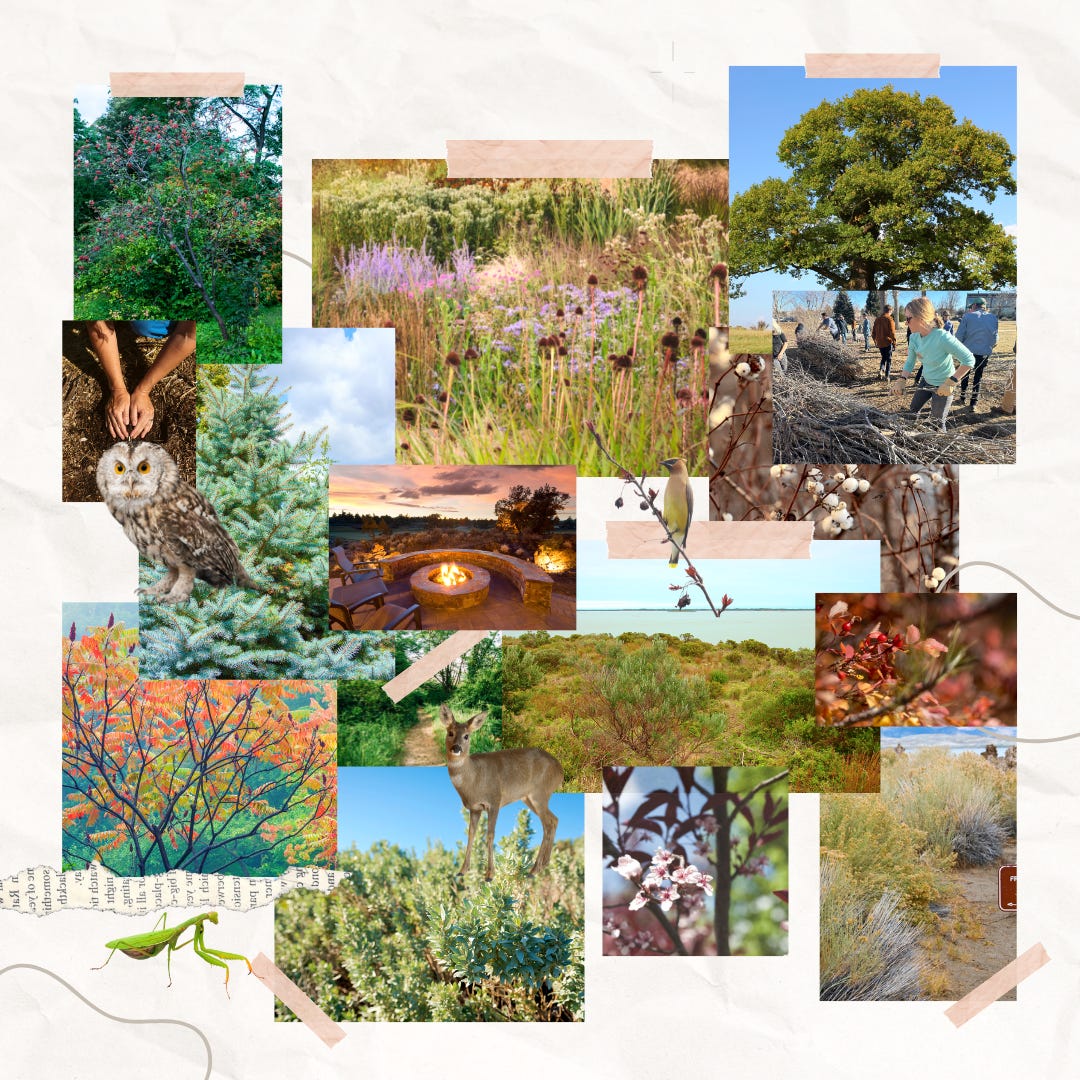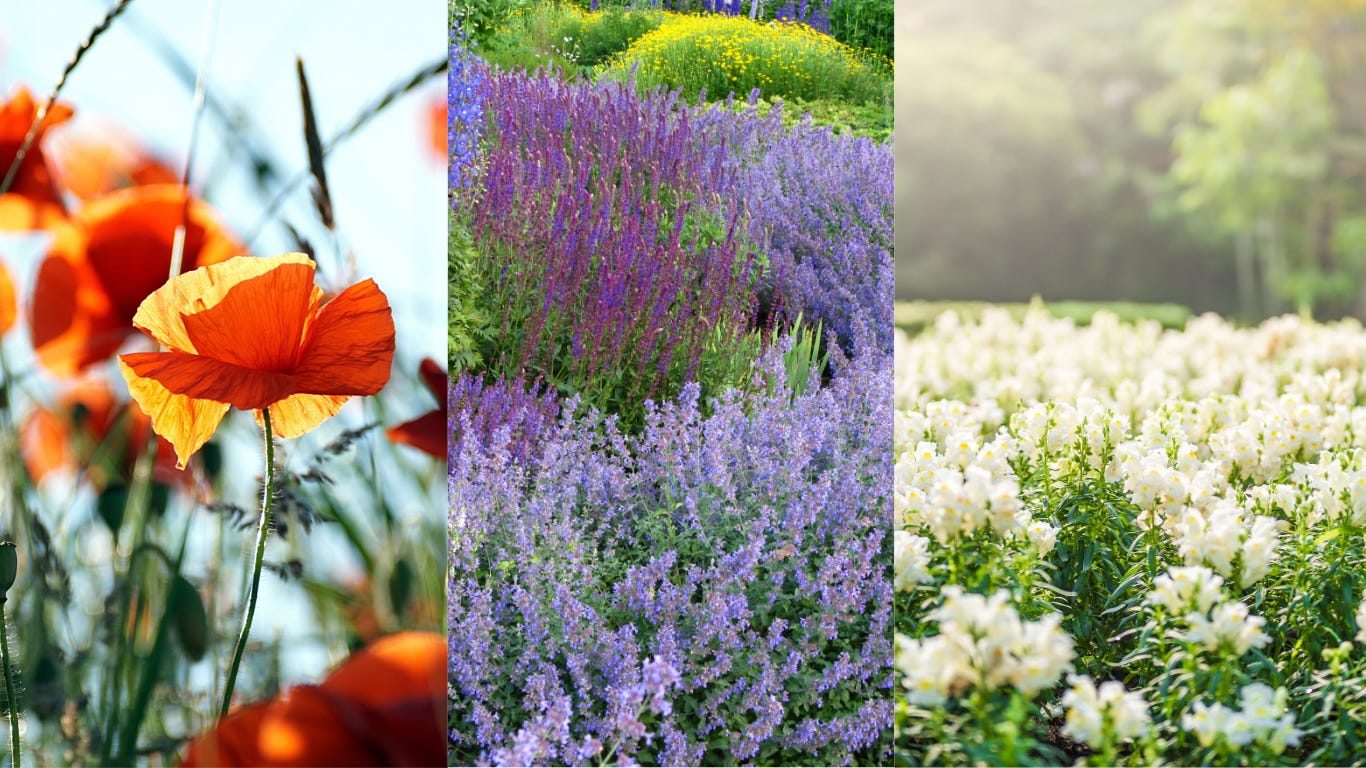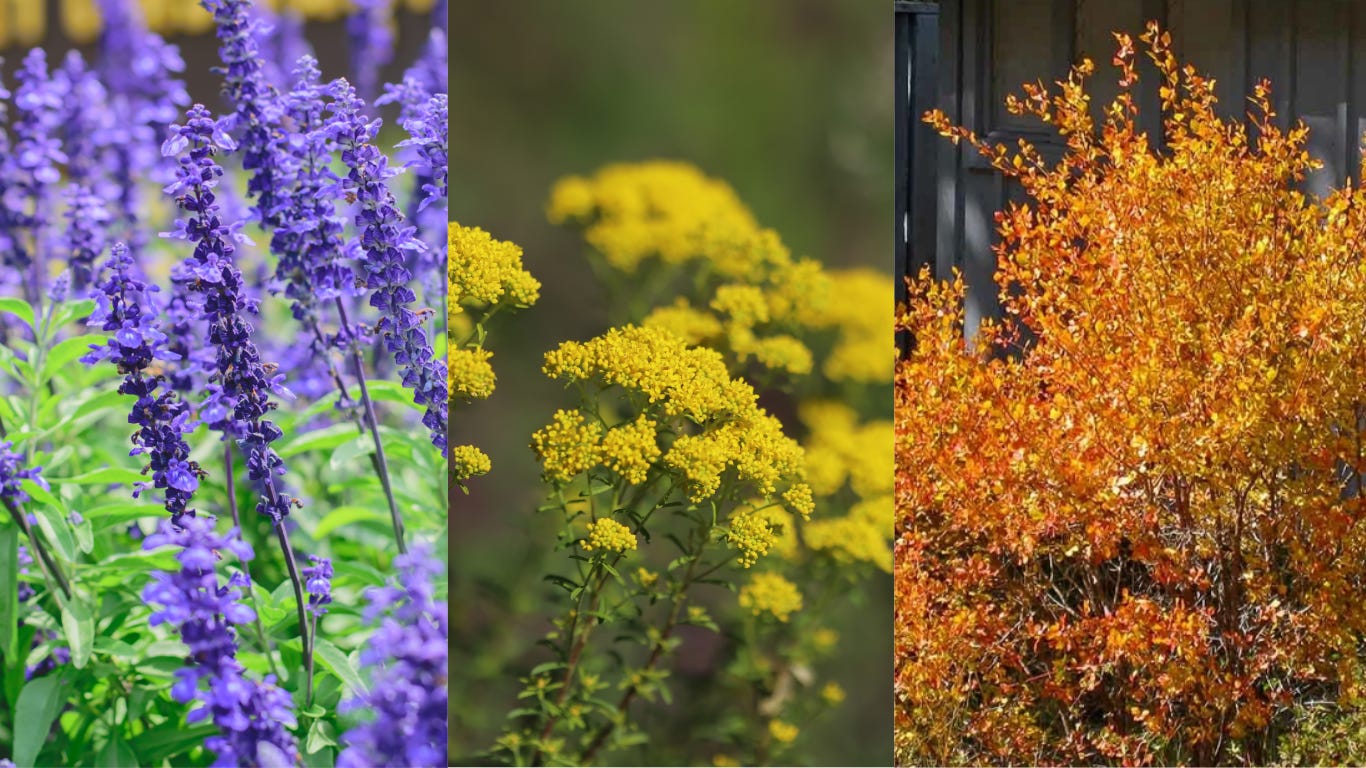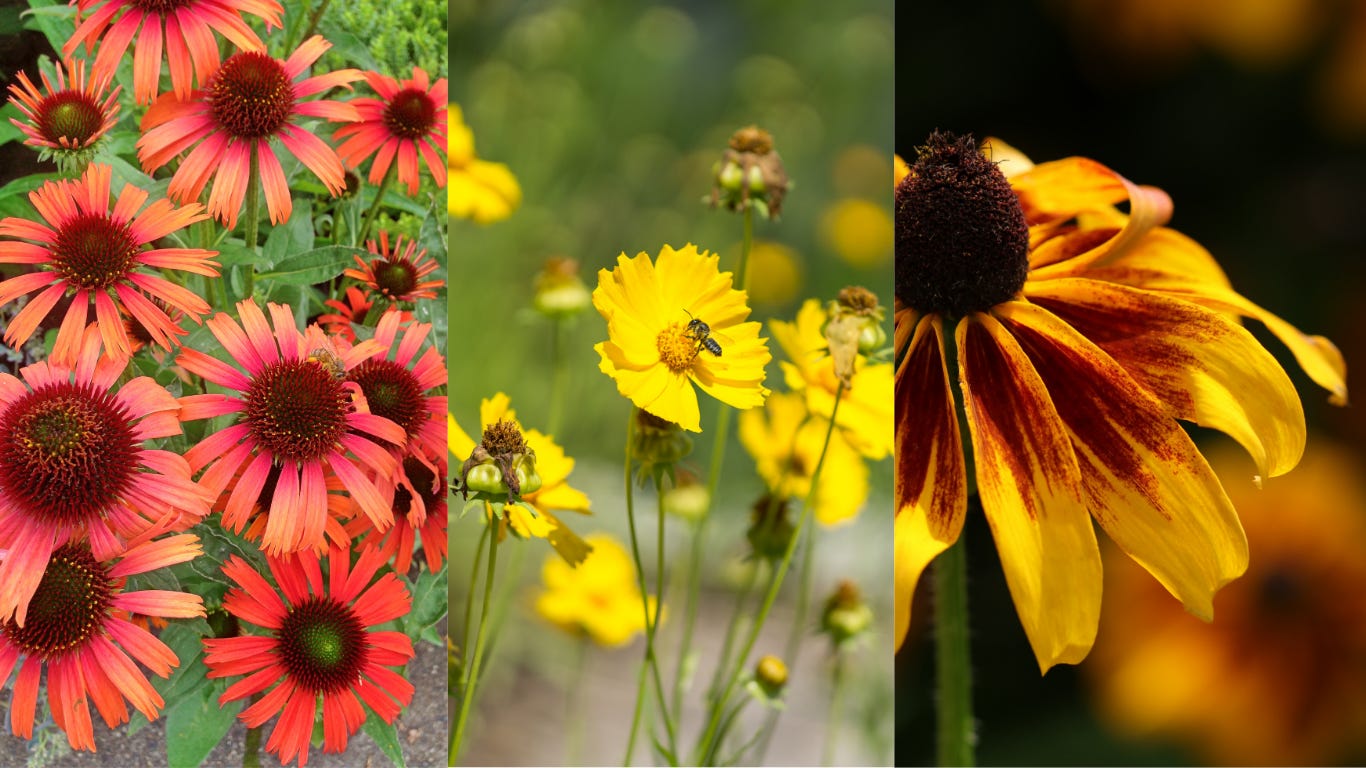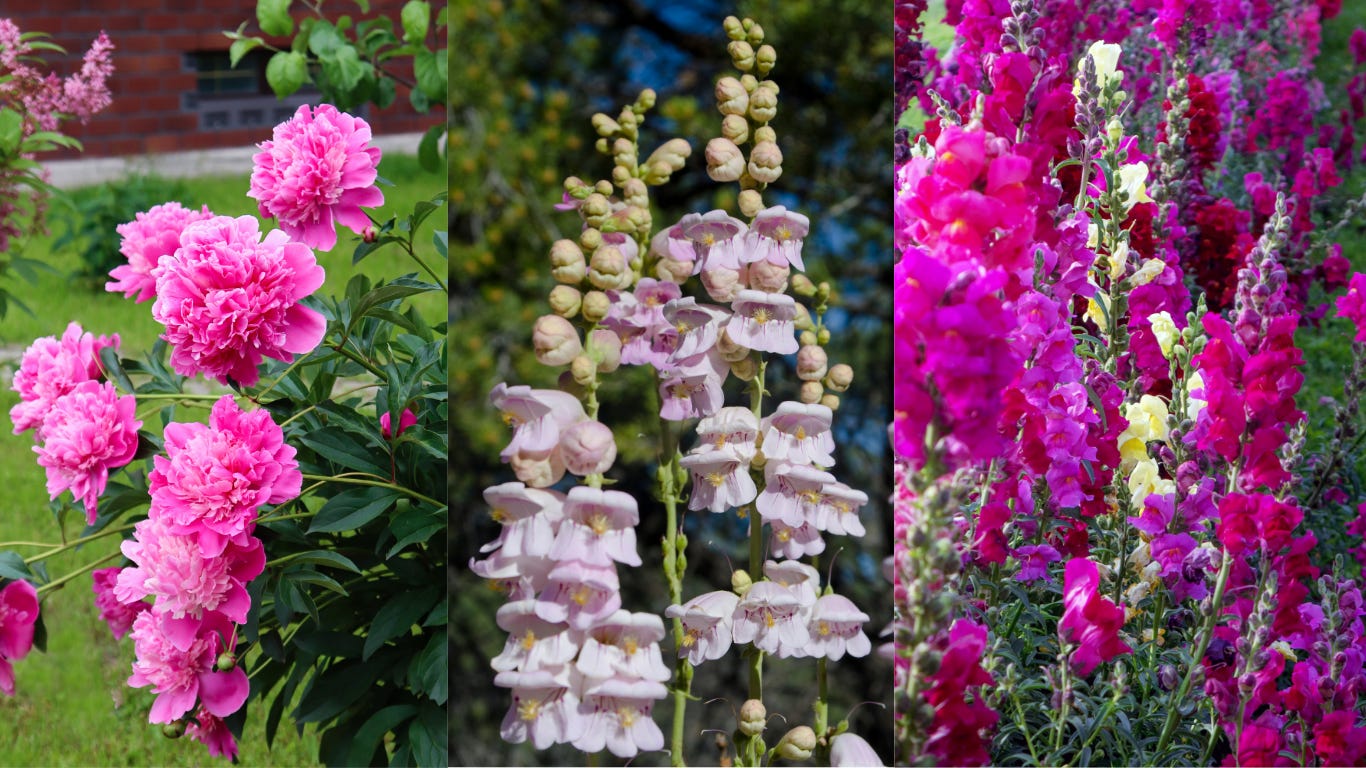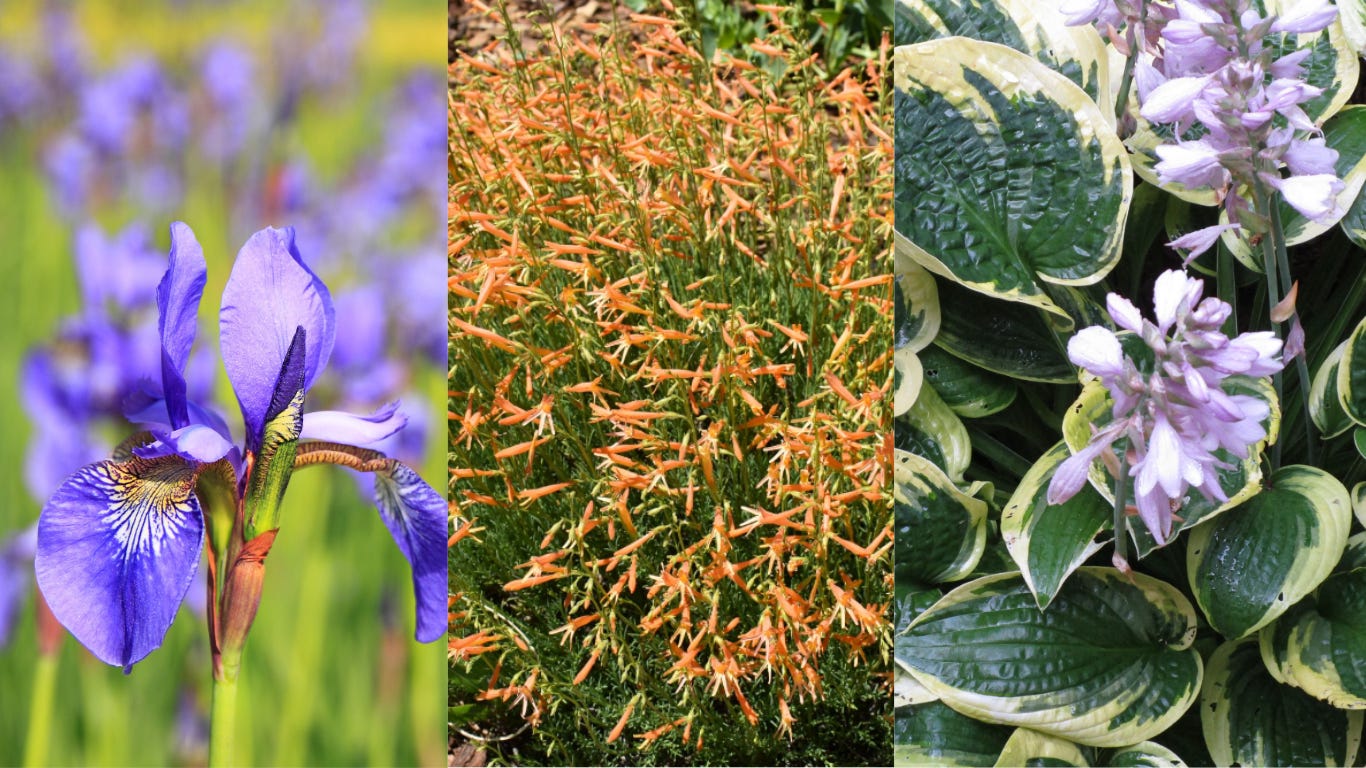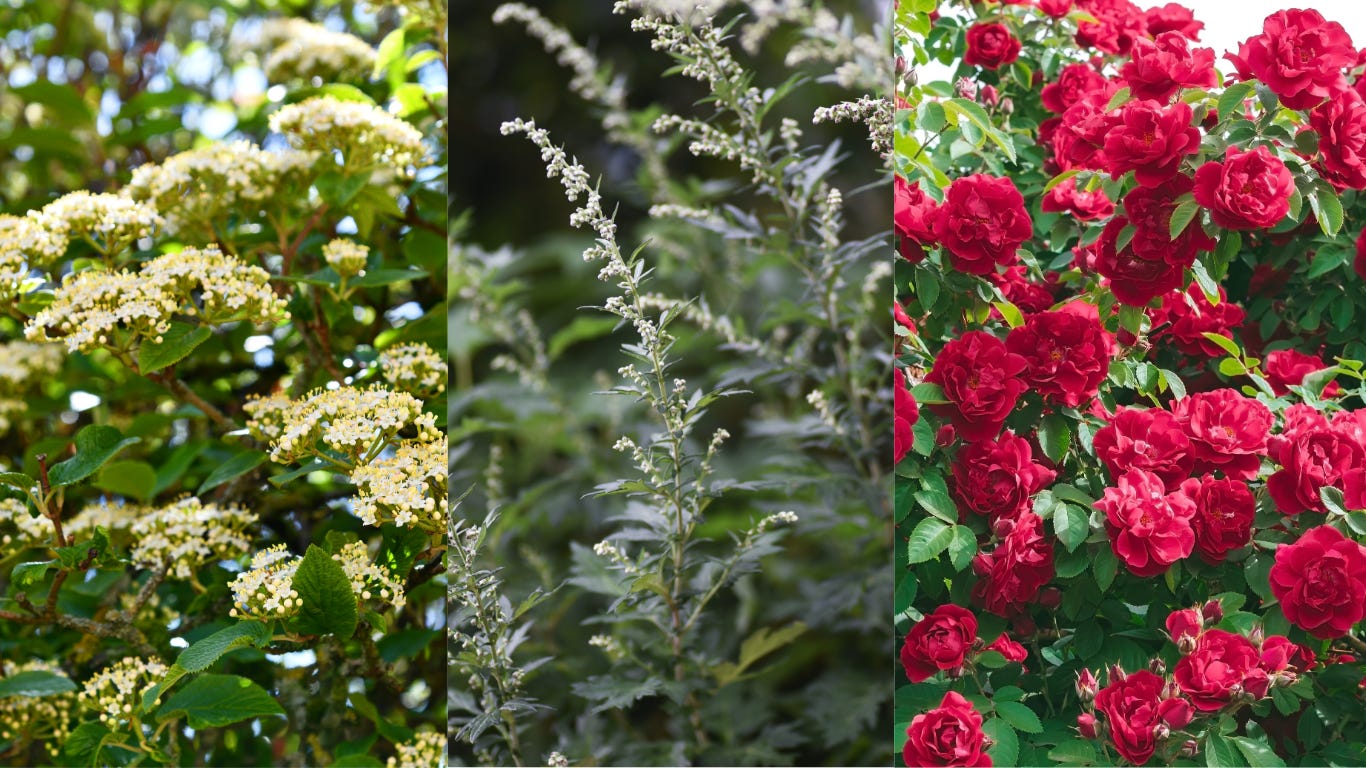How to Create Your Garden Vision Board: Turning Inspiration Into Action
A step-by-step guide for visualizing your dream garden using mood boards.
Every thriving garden starts with a vision, an idea or a feeling. Whether you dream of picking ripe tomatoes from your own garden, or a quiet place to sit in read in nature, or perhaps a garden that highlights the beauty of your home, or a space that inspires your child's imagination, a vision board is a wonderful first step in turning inspiration into action.
When we can see something and articulate our vision more clearly it helps to remove self doubt and confusion. When you enter into the garden center, you can do so with clarity and confident. You know what it is you are looking for.
Why Vision Boards Matter:
Help clarify your ideas and goals
Provides a roadmap for design and planning
Acts as a motivational tool throughout the gardening process
Provides support if you begin to doubt what you are doing or feel confused
Defining Your Garden Goals
Visioning something new in the garden and in life always begins with the question, “What do you want to feel?”. When you know your vision has come to life and you are in the full experience of it, what is that you experience?
Close your eyes, think about the feeling in your body, the visions you see before you, the sights, the smells, the sounds and perhaps even the taste of homegrown food or medicine.
When I do this for my own property I want to feel and see life all around me and a variety of it. From toads, to a variety of birds, rabbits, deer, even the occasional fox (as long as they leave my chickens alone). I see my kids building forts from the piles of long sticks and mini bridges over our irrigation canal. I see flowers growing with a variety of pollinators, more varieties showing up year after year. People pass by in this vision and feel inspired to want to remove grass and add in natives and edibles like they see growing in my gardens. It’s a place for inspiration, a place for education and a place for healing.
What do you want your garden to feel like?
Write down three words that describe how you want your garden to feel (e.g., vibrant, peaceful, healing, wild). Or perhaps you want to just free form right out your vision of your experience in this space with detail.
What do you want your garden to do for you?
Are you looking for your garden to provide food, privacy, sanctuary? What does that look like?
What do you wish to provide to the garden?
We often ask much of our gardens, molding it and shaping it into our own vision. I challenge you to think of it more as a mutual relationship. A dance between you and the space you are on. What is the land asking to be? What support can it use? Can you provide a safe haven for pollinators and other native insects? What about a place for letting the land heal and a vow to remove any non-native and invasive species and repopulating it with native or adaptive plants? What can you do to be the guardian of this land? What promises can you make to the land?
Identify your Garden Style
Popular styles out there include cottage garden, modern minimalist, native garden, edible garden, crevice gardens, xeriscaped garden. You may find that you have a combination of a few of these for example an edible garden and a native flower garden in the back and a xeriscaped garden in the front.
Consider climate and location. In Colorado gardens we often need to seek out drought-tolerant plants, high-altitude options.
Choosing a Color Palette for Your Garden Vision Board
A color palette matters in good garden design. It can shift the feeling of a space and provide a pathway for the eye to dance along the landscape. A cohesive color palette can bring harmony to the garden and help you create a mood and set the stage for an experience. It can also help you make sure all of the outdoor elements work together visually through the season. This can also help you narrow down your plant selection.
Defining the mood with color:
Warm Tones: Reds, oranges, yellows create energy, vibrancy, and a welcoming feel.
Cool Tones: Blues, purples, greens evoke calm, relaxation, and serenity.
Neutral Tones: Whites, silvers, and greens offer balance and work well in minimalist or modern gardens.
Color Combination Techniques
Complementary Colors: Colors opposite each other on the color wheel (e.g., purple and yellow, red and green, blue and orange).
Effect: High contrast creates bold, eye-catching displays.
Garden Tip:
Use complementary colors sparingly to highlight specific areas or plants.
Example: Pair purple salvia with golden yarrow, or orange Amber Jubilee Ninebark with blue agastache.
Analogous Colors: Colors next to each other on the color wheel (e.g., red, orange, and yellow).
Effect: Creates a harmonious, calming effect with a natural flow.
Garden Tip:
Choose 3-4 analogous colors for a soft, cohesive look.
Example: Combine red echinacea, black eyed Susan, and yellow coreopsis.
Monochromatic Colors: Variations of a single color, using different shades, tints, and tones (e.g., light pink to deep burgundy).
Effect: Elegant, minimalist, and serene.
Garden Tip:
Experiment with depth by combining plants with varying heights and textures.
Example: A mix of pink peonies, pastel digitalis, and pink penstemon.
Triadic Colors: Three colors evenly spaced on the color wheel (e.g., purple, orange, and green).
Effect: Balanced yet vibrant, offering a playful or artistic feel.
Garden Tip:
Anchor with one dominant color and use the others as accents.
Example: Purple iris, orange agastache, and green foliage like hostas.
Neutral Colors with Pops of Brightness: A palette of greens, whites, or silvers accented with one or two bold colors.
Effect: Clean, modern, and striking.
Garden Tip:
Use white and green as the foundation, adding bold splashes like red geraniums or yellow sunflowers.
Example: White flowering virburnum, silver mugwort, and red roses.
How to Use Color Combinations in the Garden
Color can help you draw the eye to highlight a focal point like a seat, a pathway or a centerpiece plant. Also important to note that in Colorado’s bright, intense sunlight, bold colors like red, orange and yellow really stand out in our landscape while softer colors like pinks and whites can look washed out. Also important to take into consideration the color of structures like your house or views in the distant. Add the colors you are drawn to in your vision board.
Gather Inspiration
A classical way to create you vision board is by cutting out magazines, seed catalogues or printing out your own photos and arranging them on a piece or paper or board. You may even have your own photographs you have taken from local botanical gardens, parks, a neighbors yard or native plant nurseries. Begin to compile and collect these images as you go.
Some of my favorite media sources:
Pinterest
Gardening Blogs
Take Action On Creating Your Vision Board
Decide on the format that is most appeal for you. As a garden consultant I use Canva to create my vision boards. It allows for easy image search and customization to create a vision specific to my clients needs. You may choose to create a physical board like a poster board or sketchbook.
Here is what I include in all of my vision boards:
Color pallet and textures
Plant recommendations
Hardscapes: paths, seating areas, raised beds, trellises
Align Your Vision with Reality
Once you have all of your elements organized and you are happy with your vision it’s time to align that with a timeline and the reality of bringing this vision about. Here are important questions to ask yourself:
Does your dream garden fit your yard’s dimensions and conditions?
What is your budget for materials, labor and ongoing maintenance?
How much time do you have to dedicate to your vision this year, or over the next five years?
Translate Your Vision into a Plan
What actionable steps do you need to take?
Does the soil need preparation?
Does grass or materials need to be removed?
What is the schedule of when plants can go out?
Will you start some plants from seed?
Can you divide or take cuttings from somewhere else?
What are your plans for irrigation?
Are the plants a good fit for your climate, soil and water conditions?
Begin to map out your vision and let it develop over time. You may find your adjust as your garden evolves but keep your vision board somewhere visible to keep your motived.
Remember, every flourishing garden begins with a single seed- and a clear vision.
Start your garden vision board today and share it with our community! What’s your dream garden for 2025?
Looking for support in creating your vision board or bringing your garden to fruition? Schedule a free 15 minute discovery call to get support in bringing your vision to reality.
Next up: “Garden Design Through the Lens of Nature: Harnessing Organic Patterns for Stunning Designs'“





